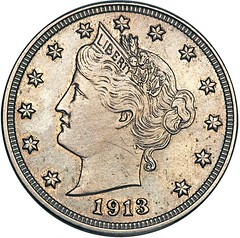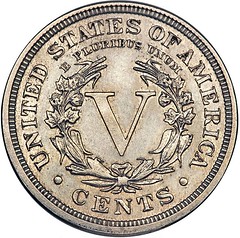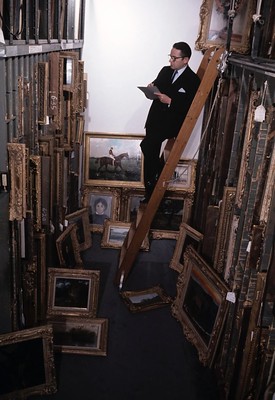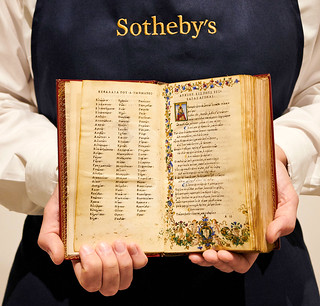
PREV ARTICLE
NEXT ARTICLE
FULL ISSUE
PREV FULL ISSUE
LOOSE CHANGE: AUGUST 27, 2023Here are some additional items in the media this week that may be of interest. -Editor In his NGC blog Jeff Garrett reminisced about his connection to the Walton 1913 Liberty Nickel. -Editor This week's 2023 ANA convention marks the 20th anniversary of the rediscovery of the missing Walton 1913 Liberty Nickel. I was asked to be part of the team that authenticated the coin for the Walton heirs who had come forward with the coin. Ten years later, in 2013, my company purchased the coin at auction. My purchase of the 1913 Liberty Nickel was one of the most exciting experiences of my numismatic career. The following is a detailed account of what happened that night. Over the years, when asked about the most expensive coin I have ever sold, my mind quickly races with memories of April 25, 2013. Our team was attending the Central States Convention in Rosemont, Illinois, and the show had just concluded for the day. An important auction was being held that night at the convention, with the star lot being one of the legendary 1913 Liberty Nickels. Only five examples are known of this classic rarity, and for decades it has been one of the most coveted United States coins. The example being offered that night had been missing since the 1960s, until its rediscovery in 2003. The Walton family decided to part with the coin, and a room of about 300 people were waiting anxiously for it to cross the auction block. I was on the way to dinner with my son, Ben, when my cell phone rang. One of my closest dealer friends, Larry Lee, was calling back about an inquiry I had made days earlier. Larry had several important retail clients who I thought might be interested in owning a 1913 Liberty Nickel. In actuality, Larry had decided he wanted to own the "holy grail" of numismatics himself. Larry agreed to split the coin with me, with him owning the majority interest.
To read the complete article, see:
A great New York Times Magazine article delves into the complex backstory of a leading art dealing family. Well worth reading. -Editor
Over 150 years, the family has amassed an art collection estimated to be worth billions by quietly buying up troves of European masterpieces that would be at home in the Louvre or the Vatican, holding their stock for generations and never revealing what they own. A trial this September will determine if the family and their associates owe a gargantuan tax bill. The last time prosecutors went after the Wildensteins, several years ago, they sought €866 million — €616 million in back taxes and a €250 million fine, as well as jail time for Guy. The consequences could do more than topple the family's art empire. The case has provided an unusual view of how the ultrawealthy use the art market to evade taxes, and sometimes worse. Agents raiding Wildenstein vaults have turned up artworks long reported as missing, which fueled speculation that the family may have owned Nazi-looted or otherwise stolen art, and spurred a number of other lawsuits against the family in recent years. Are there parallels in the numismatic world? A sufficiently advanced collector is little different from a dealer - they all have different timeframes for how long to keep an acquisition in stock and off the market. John J. Ford was notorious for keeping rarities off the market for decades. Collector/investor John A. Beck's hoards of pioneer gold and 1856 Flying Eagles were sequestered in vaults for decades after his death. Are there similar hidden multi-generational accumulations of rarities waiting in the wings? -Editor
To read the complete article, see:
For bibliophiles, here's an article about the smell of old books. -Editor
Modern books smell different because of changes in manufacturing, while old books release distinctive volatile organic compounds (VOCs) as they slowly decay. Scientists are sniffing out these VOCs to reveal secrets about a book's age, condition, and history. An almond scent comes from benzaldehyde in the paper. Vanillin, the main compound in vanilla, is responsible for a sweet vanilla fragrance. Ethylbenzene, used in inks and paints, has a sweet plastic smell. 2-Ethyl hexanol, found in solvents and scents, smells lightly floral. New books use modern chemicals like hydrogen peroxide and alkyl ketene dimers, so they give off different VOCs. The VOCs can also indicate exposure to smoke, water damage, or other aging factors. Librarians and historians use VOC analysis to study collections and even match orphaned books with the libraries they came from based on chemical fingerprints. It provides clues to an old tome's origins and secrets as it aged over decades or centuries.
To read the complete article, see:
Alan Luedeking passed along an article about a blockbuster sale of 16th-century books. -Editor
The books and bindings are culled from the collection of T. Kimball Brooker, an American bibliophile and scholar who amassed more than 1,300 titles over six decades to create one of the most important rare-book libraries to ever reach auction. The library sits at the crux of art, architecture, and knowledge in the Renaissance era, and is considered the finest such collection to exist outside Europe. One highlight from the sale is an early manuscript of Leonardo da Vinci's Treatise on Painting, containing all of its original 375 chapters and 56 illustrations in ink. Several of these works from the Brooker collection were sold in Sotheby's auctions as far back as 1817, highlighting the house's origins as a bookseller.
T. Kimball Brooker is an exalted figure in the world of antiquarian book collecting. In 1959, while studying at the Sorbonne in Paris, he came across a book of orations by ancient Roman statesman Cicero in vellum binding. Sure that he had made a great find, he bought it for $10 and took it to a dealer on rue de Seine who told him it was, in fact, worthless. But the experience set Brooker on a bibliophilic path. While studying for his MBA at Harvard, he titled his master thesis Alan writes: "There's GOT to be some numismatic stuff in there!"
To read the complete article, see:
Wayne Homren, Editor The Numismatic Bibliomania Society is a non-profit organization promoting numismatic literature. See our web site at coinbooks.org. To submit items for publication in The E-Sylum, write to the Editor at this address: whomren@gmail.com To subscribe go to: https://my.binhost.com/lists/listinfo/esylum All Rights Reserved. NBS Home Page Contact the NBS webmaster 
|





